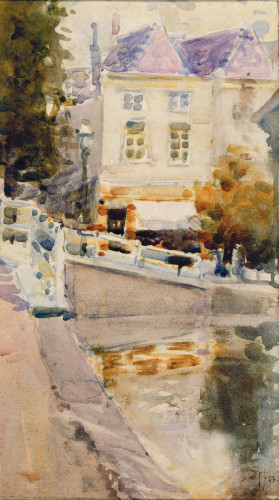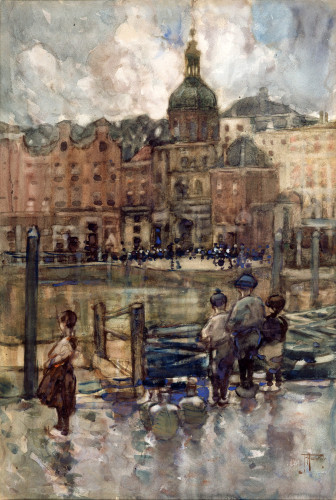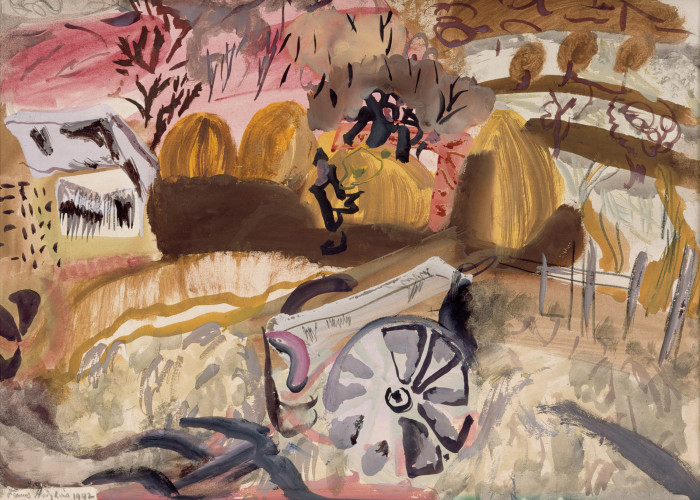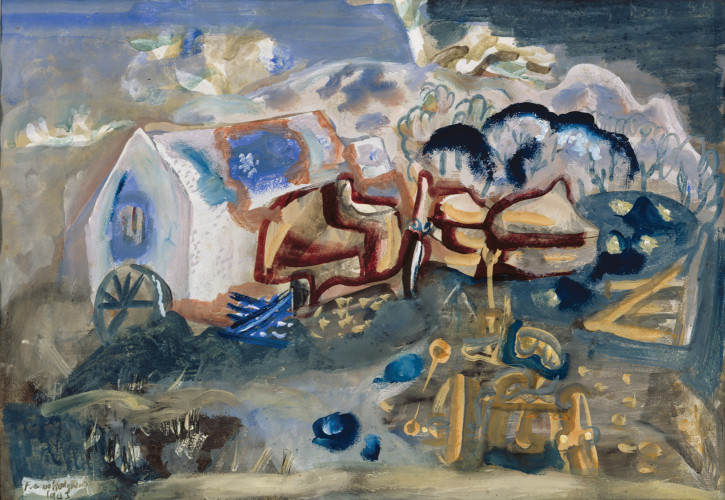Frances Hodgkins
in Town and Country
13 October 2007 - 13 April 2008
I longed for you when I was in Bucks, the beauty of the English lanes is beyond all description. [...] amidst such beauty one seemed to get more at the heart of things ...
Frances Hodgkins to her sister, Isabel Field, 28 June 1901
My brain congeals into lumps in this social atmosphere ... I can't stay long in London — too expensive [...]
Frances Hodgkins to her friend, Dorothy Selby, c. March 1935
It is scarcely surprising that, as she worked to bring into focus her vocation as a painter, Frances Hodgkins ranged widely in the 1890s, flirting with landscape—which was the dominant subject in New Zealand painting in this period—but also exploring more modern themes, the portrait, the figure and genre subjects.
Her earliest landscapes are few in number, and share the un-dramatic approach which her father, William Mathew, and her sister Isabel, both seem to have favoured, and like her father Frances occasionally tried her hand at townscape too. After her arrival in Europe in 1901, urban scenes—let us call them 'exotic' or 'picturesque' townscapes—became a major interest. Medieval English towns, French fishing ports, Italian and Moroccan and Dutch towns, the latter with their ubiquitous canals, proliferated until the late 1920s.
Thereafter, however, her apparent affection for towns and cities seems to have faded.
Although her professional life was necessarily urban, since that was where the major exhibitions were held and the commercial galleries located, life there was stimulating but also stressful and expensive, and she was often poor. Living in the countryside was cheaper and more relaxed. There are few townscapes in her work after about 1930, and in those shown here her approach is more detached, more 'analytical'.
But there was also an affective reason for this shift from the urban to the rural.
Paradoxically, her family life in Dunedin had been at times semi-rural: Cranmore Lodge, the property the family lived in for many years (in present-day Wallace Street), was extensive enough for them to keep a cow and poultry, and also—so it would seem from her father's affectionate drawing—a pig; and her love of country life and animals is reflected in her letters. Some pictures (such as the views of Ibiza and Cassis displayed here) emphasise the surrounding landforms at the expense of the towns and buildings they embrace.
Across the 1930s and '40s we find landscapes expressing a range of moods, from the introspective gloom of the Stormy Sunset over Peaslake, Surrey to the ambivalent lyricism of the 1940s. There is an ironic contrast between the joyous colours of these late works and the war which was then raging, and a tragic contrast between them and the pessimism she expressed to a friend in October 1946: 'why is the way ahead so black?'
View the exhibition labels — click here






